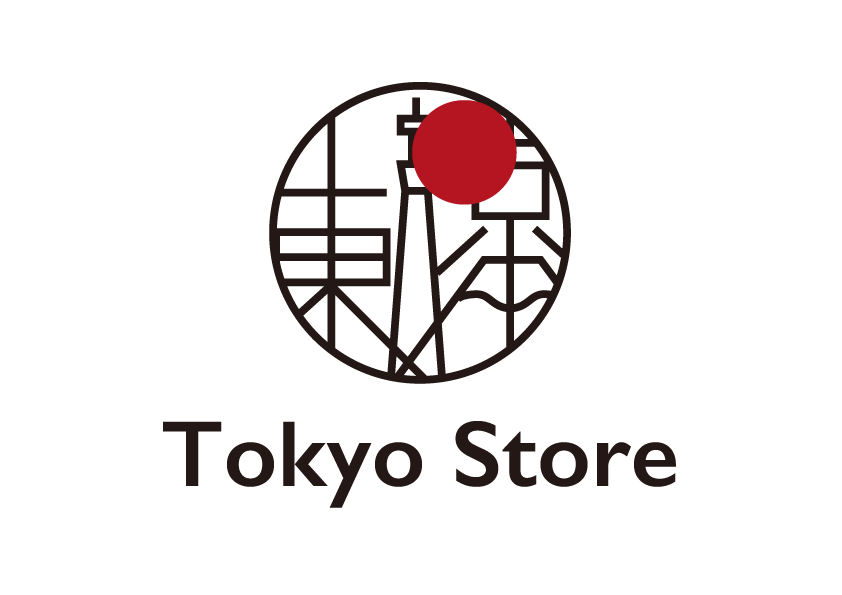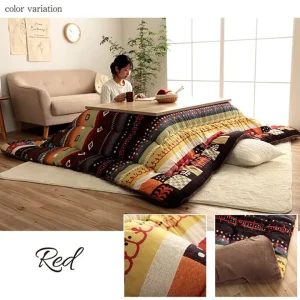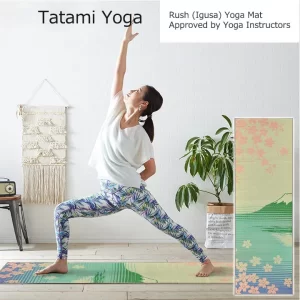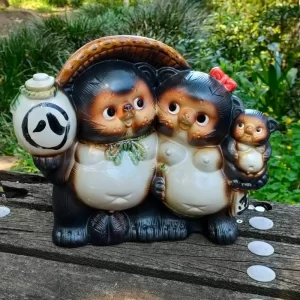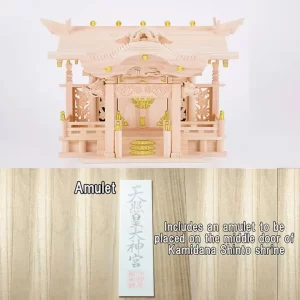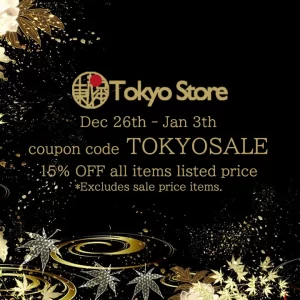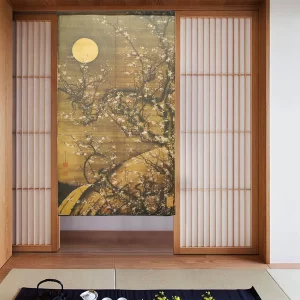New Arrival Kotatsu Futon Comforter
We recommend the Japanese Kotatsu Futon Comforter as a heating item during cold weather or in cold areas.Kotatsu Futon Comforter warms from the feet up, which not only improves sensitivity to cold, but also helps to improve various symptoms such as swelling, stiff shoulders, and constipation.There are also various types, including thick and thin types, designs and shapes, so choose the one that best suits your room. Kotatsu Futon Comforter Blanket Manafis Made in Japan Free ShippingKotatsu Futon Comforter Blanket Manafis Made in JapanSize: approx.200x200cm / approx.200x250cm / approx.200x290cmColor:Orange / YellowPlace of Origin:Made in Japan Kotatsu futon comforter Asanoha Futon Comforter Free ShippingSize: about 205×205cm/about 205×245cm/about 205×285cmColor: Navy/Deep Red Kotatsu […]
Noren Tapestry Features Masterpieces by Japanese Genius Ito Jakuchu
“Ito Jakuchu”6th year of Shotoku (1716) -12th year of Kansei (1800) After learning from the Kano school painter Ooka Shunsuke, he abandoned the painting method andAmong the Song dynasty paintings (Chinese paintings), I copied a colorful bird-and-flower painting.Furthermore, Jakuchu, who abandoned this painting method and shifted to real life photography, I copied a work of beautiful colors and flower painting.Furthermore, Jakuchu, who abandoned this painting method and shifted to real life photography, drew a work of beautiful colors and detailed depiction.However, in reality, it is hard to say that it is a sketch, and the colors and forms captured by Jakuchu's unique sensation are developed throughout the work. Characteristics of […]
New Arrival Tatami Igusa yoga mat Tatami mat
A tatami yoga mat is recommended by yoga instructors. The scent of igusa offers an excellent relaxing effect.Made with domestically produced igusa, each strand is thick with a thick outer layer and finely detailed fibers, providing elasticity and excellent durability.The back is made of TPE rubber, which is used for yoga mats, making it slip-resistant and cushioned.Tatami Igusa has deodorizing and humidity-regulating effects, so it doesn’t retain the smell of sweat and feels dry to the touch without stickiness. It also has the added benefit of being antibacterial and deodorizing.This yoga mat is slightly larger in width and length than standard yoga mats, making it easy to move around freely […]
Incorporating the works of Maruyama Okyo into Noren tapestries
The works of Maruyama Okyo, a charismatic painter who is the pride of Japan, are incorporated into traditional Noren tapestries.By decorating your home, the Noren Tapestry will of course function as a sunshade, dust shield, and blindfold, but the presence of Maruyama Okyo's work will also create a modern Japanese art space. Who is Maruyama Okyo?Kyoho 18 (1733) - Kansei 7 (1795)Maruyama Okyo is a charismatic Japanese painter. He is also known as the “founder of Japanese sketch painting.Many of his works are characterized by the fact that he did not paint what he saw, but reconstructed them based on his sketches. Maruyama Okyo also studied the Western method of […]
What is Shigaraki wareTanuki raccoon dog in Shiga Prefecture?
"Shigaraki wareTanuki raccoon dog" is famous as a lucky charm.It is also recommended as a gift for opening a store or moving house, as it is an item that brings good luck, such as prosperous business, good fortune, and increased financial luck.About the Shigaraki ware raccoon figurineHave you ever seen a Shigaraki wareTanuki raccoon dog doll wearing a hat, with a big belly, and big eyes, at a store, restaurant, or at the entrance of your home in Japan?This doll is famous as the "Shigaraki wareTanuki raccoon dog", and you will most likely see it especially in Shiga Prefecture.We will also tell you about Why there are so many Shigaraki […]
Types of Kamidana Shinto altar and how to choose and amulet plate
There are so many types of Kamidana Shinto altar. Many people may be at a loss as to which one to choose.Here are some tips on how to choose the right one for your first Kamidana Shinto altar. About the size of the Kamidana Shinto altar First, make sure that the Kamidana Shinto altar you choose is large enough to fit in your installation space.Also, check whether the Kamidana Shinto altar is the type that holds the amulet plate inside or the type that can be placed inside the altar. The design of the Kamidana Shinto altar Kamidana Shinto altar comes in a variety of shapes and designs.・A one-roofed Kamidana […]
New Arrival Mino Ware Whale Design Tableware
Whale Design tableware has a very large impact of a whale swimming majestically in the sea.Each tableware uses celadon glaze to further accentuate the blue color and a water-repellent finish to create the three-dimensional effect of the waves.The contrast between the rust-wrapped brown of the high pedestal and the indigo of the waves tightens the design, and other details have been carefully considered in this tableware. Minoyaki tableware.Mino ware is a traditional Japanese craft.And "Mino ware" is the generic name for ceramics produced in the Tono region in southern Gifu Prefecture.
Winter Sale & New Year's Sale
Winter Sale & New Year's SaleDec 26th - Jan 3rdCoupon code: TOKYOSALE15% OFF all items listed price*Excludes sale price items. New Year HolidaysDec 29, 2023 to Jan 4, 2024 for New YearTokyo Stroe New Year Holiday.About shippingDepending on the date of your order,your order will be shipped after January 5th.
Noren tapestry Jakuchu Ito design
Ito Jakuchu
Jakuchu Ito was a Japanese painter active during the Edo period in the 1700s.Jakuchu, who taught himself how to paint and continued to paint until his death in 1800 at the age of 84, left behind many works throughout his life.The appeal of Jakuchu's works lies in the richly colored, detailed depictions born from his transcendent technique, and the surrealist, fantastical atmosphere.In addition, his works are sometimes referred to as ``fantasy school,'' and are highly acclaimed for their innovative ideas and unique sense of color and form that are not bound by conventional painting methods. increase.Jakuchu left many works on the theme of nature, such as animals and plants.In particular, […]
Tokoname ware Kyusu teapot Recommended
Tokoname ware, which has been made mainly in Tokoname City, Aichi Prefecture, boasts the largest market share in Japan for Kyusu teapots. Tokoname ware teapots are designated as important intangible cultural properties. Tokoname ware Kyusu teapot is an integral part of Japanese culture. Speaking of Kyusu teapot, Tokoname ware is recommended. There are many types of Tokoname-yaki Kyusu teapots, from classical to modern. In addition, the tea brewed in the Tokoname-yaki Kyusu teapot is very mellow and delicious. That is the secret behind the popularity of Tokoname ware teapots. *Click here for Japanese candle items What are the characteristics of Tokoname ware Kyusu teapot? Tokoname ware is a type of […]
